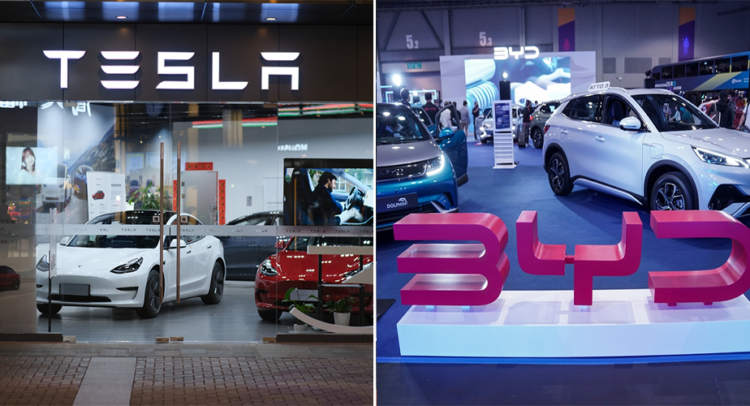The Wall Street Journal may have been single-handedly responsible for causing basically every EV stock on the market to decline Monday, after spooking investors with a story of “how China is churning out EVs faster than everyone else.”
Protect Your Portfolio Against Market Uncertainty
- Discover companies with rock-solid fundamentals in TipRanks' Smart Value Newsletter.
- Receive undervalued stocks, resilient to market uncertainty, delivered straight to your inbox.
“Chinese automakers are around 30% quicker in development than legacy manufacturers,” warned the Journal. Chinese car companies work on many stages of development at once, rather than one at a time; get their subcontractors to work deliver parts faster; and eschew mechanical testing for faster, virtual testing of products. In one particularly revealing revelation, WSJ noted that at least some Chinese companies are even outfitting their cars with extra, unused semiconductor chips during production – so that they’ll have additional computer capacity for new, as-yet unthought-of product updates to be delivered over the air long after being sold.
Chinese car companies are, in a word, outmaneuvering Western car companies like Tesla (NASDAQ:TSLA).
As the most direct car competitor to many of China’s EV-focused car companies, Tesla in particular may be right to be scared, argues Bernstein analyst Toni Sacconaghi.
Sacconaghi does a compare-and-contrast exercise between the world’s erstwhile biggest producer of electric vehicles, Tesla, and the Chinese company that has stolen away this title: BYD.
During the 11 years since Tesla released its first (upper) mass market EV, the Model S, says Sacconaghi, Tesla has managed to develop and release just four more car models – the Model X, Model 3, Model Y, and Cybertruck. Over this same time period, BYD has launched 54 car models – 30 fully electric, and 24 more plug-in hybrid. In 2023 alone, Tesla finally began selling its long-awaited Cybertruck, the only new model it released that year. In 2023, BYD, however, released seven new models.
With so many more models available for sale, tailored to discrete segments of the market, it makes sense that BYD would now be selling more EVs than Tesla does. What’s interesting, though, is that Sacconaghi thinks this may be at least partly intentional. Analogizing Tesla to Apple, Sacconaghi notes that the iPhone company spent its first several years of iPhone production issuing new and improved iPhone models at the rate of just one per year – in marked contrast to rivals such as Samsung which churned out a whole plethora of variations on its Android theme.
Apple’s logic, if you recall, was that it was keeping things simple, and making it easier for consumers to choose to just buy the iPhone, rather than weighing the pros and cons of multiple similar models. And that worked well for Apple (until around the time of the iPhone 4 and 5, the company decided to make things more complicated).
Will it continue to work for Tesla, now that it’s been relegated to No. 2 status in EVs? According to Sacconaghi, Tesla may have to just cross its fingers and hope. With 90,000 engineers working on its products, to Tesla’s mere 15,000 engineers, BYD outnumbers Tesla by a factor of six – and has plenty of workers to help it churn out as many new models as it likes. The fact that many of Tesla’s engineers are tied up in pet projects of Elon Musk’s, such as Cybertruck, and Semi, may further hamstring the company’s ability to innovate.
Just because simplicity worked for Apple (until it didn’t), doesn’t mean that simplicity will save Tesla, as the market for EVs gets only more competitive. And as things stand today, Sacconaghi thinks investors’ best play is to sell Tesla stock – and buy BYD instead.
To find good ideas for EV stocks trading at attractive valuations, visit TipRanks’ Best Stocks to Buy, a tool that unites all of TipRanks’ equity insights.
Disclaimer: The opinions expressed in this article are solely those of the featured analyst. The content is intended to be used for informational purposes only. It is very important to do your own analysis before making any investment.

















